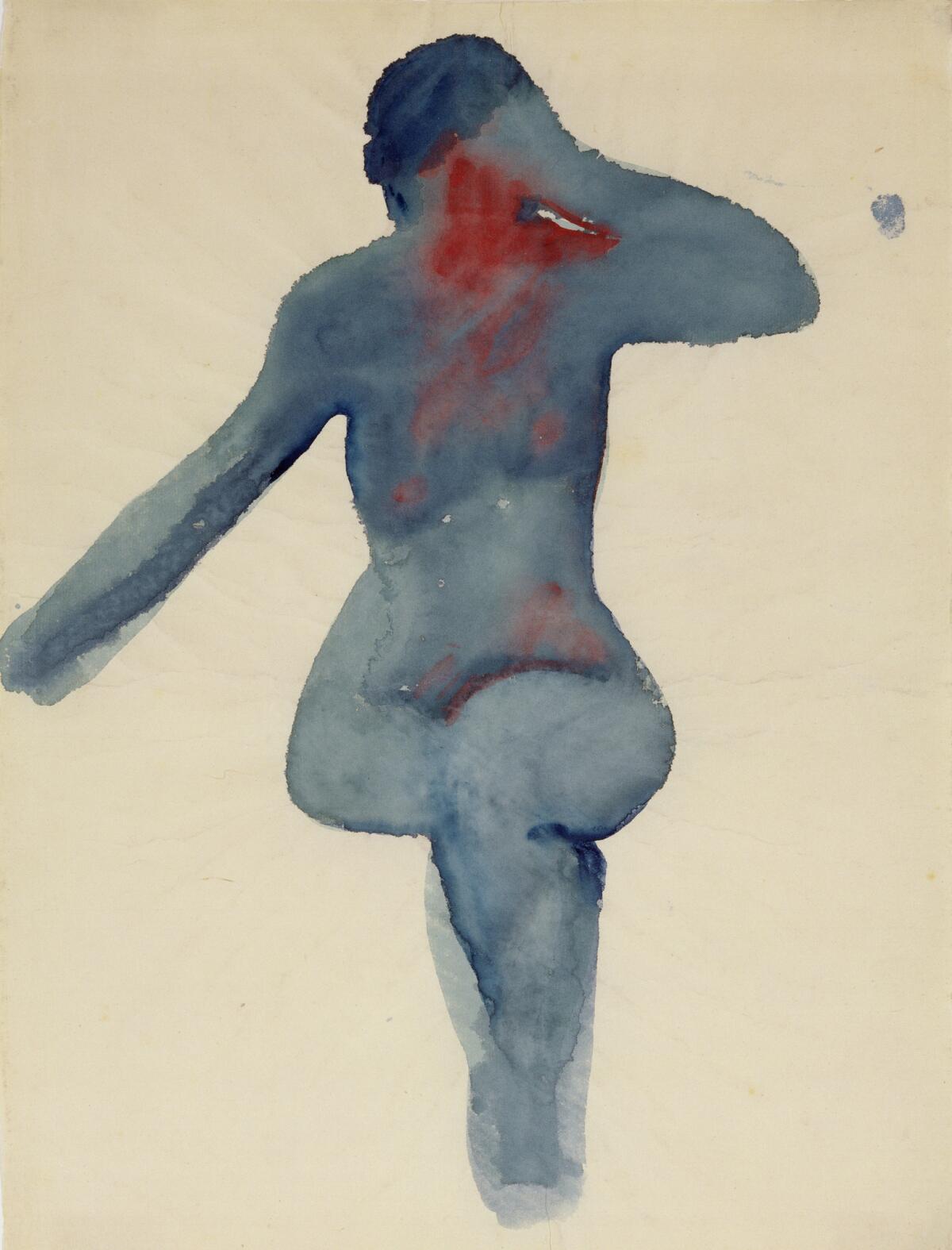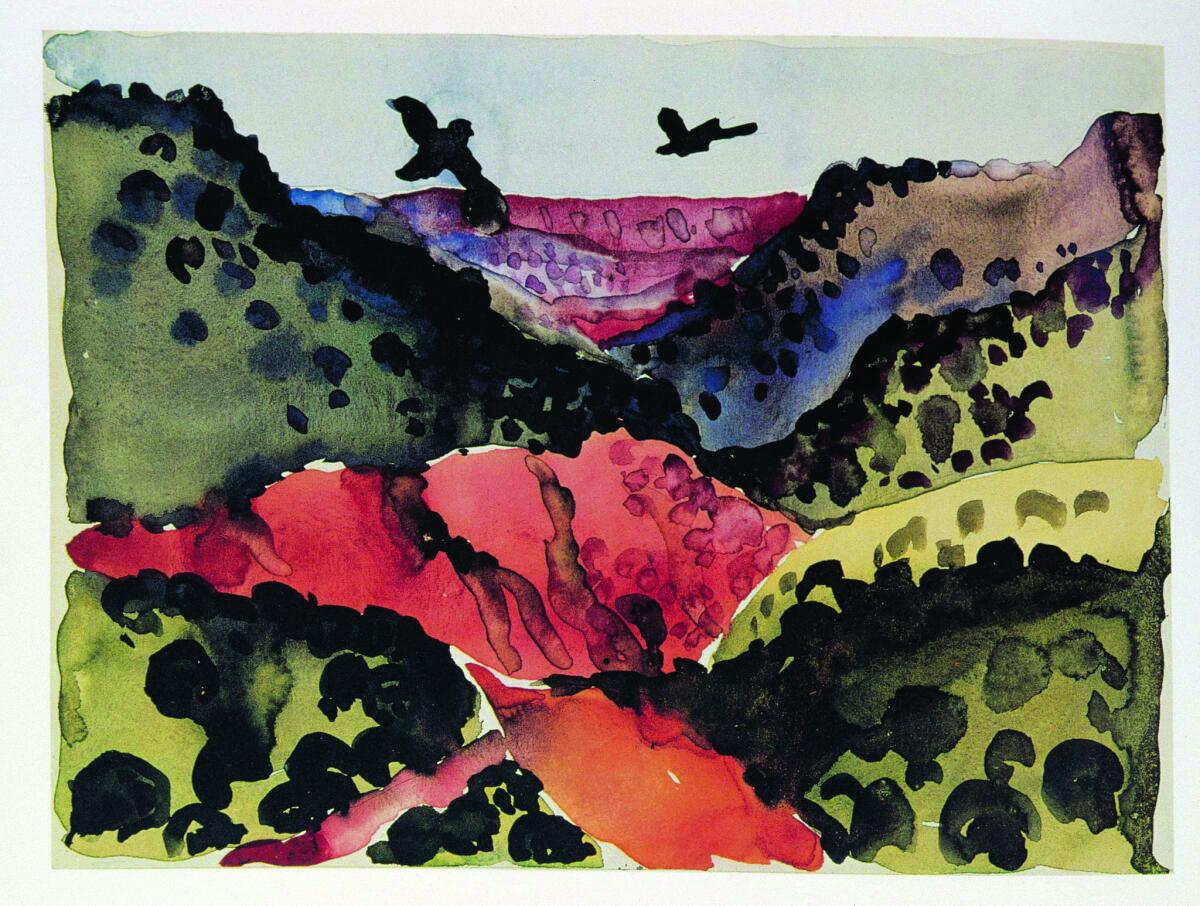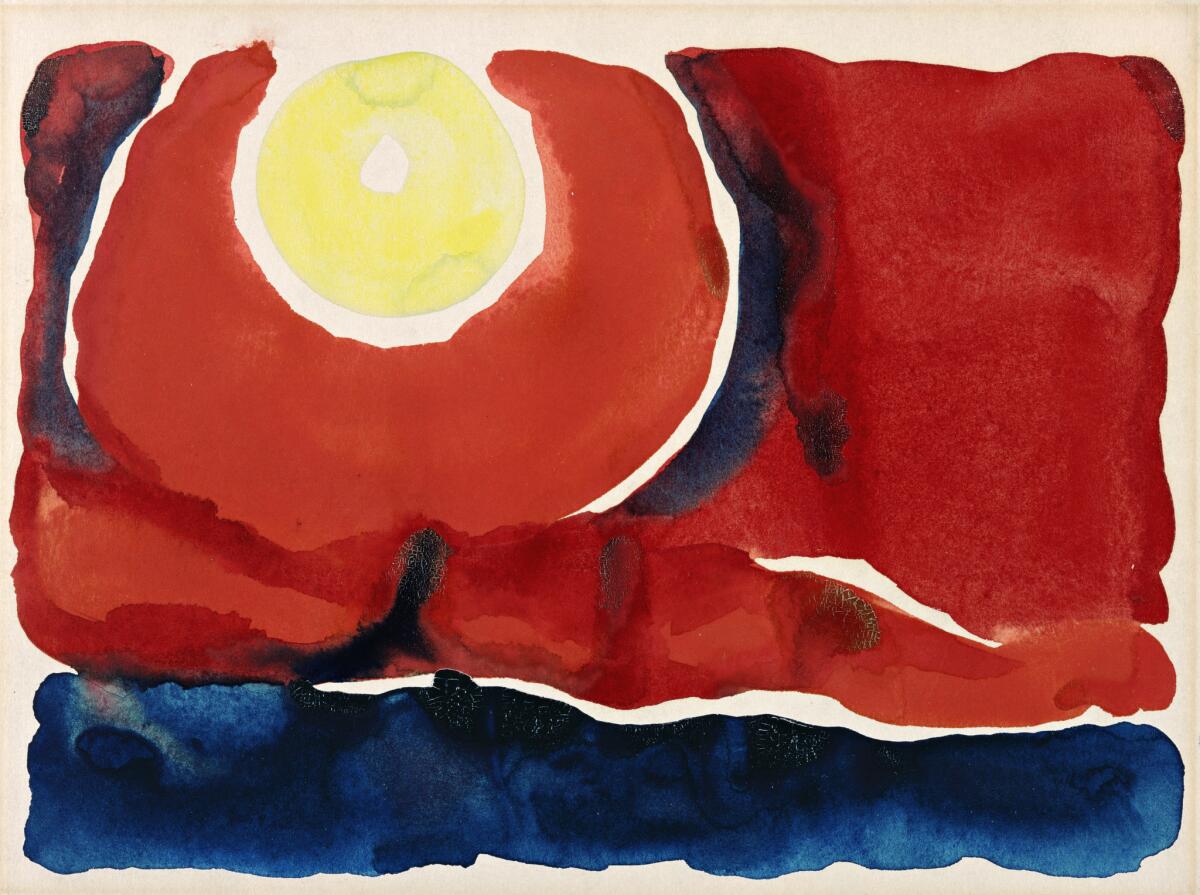Georgia O’Keeffe’s early watercolor paintings: Vivid, free-wheeling and full of surprise
- Share via
Georgia O’Keeffe, not quite 30 and not yet famous, moved to Canyon, Texas, in 1916. She spent 17 months in the Panhandle town, teaching at a local college and painting small, vibrant watercolors that expressed her interest in color, composition and a new approach to making art.
“She was at the peak of her commitment to abstraction,” says Carolyn Kastner, curator of an exhibition of Canyon watercolors running through Oct. 30 at the Georgia O’Keeffe Museum in Santa Fe, N.M.
“Georgia O’Keeffe’s Far Wide Texas” features 28 landscapes, abstractions and nudes drawn from the museum’s collection and loans. They represent more than half of the 51 watercolors O’Keeffe produced in Canyon.

The pieces are “amazingly well-preserved,” says Kastner; however, their fragility limits how often they can be displayed. The show provides a rare chance to view the works. So does its catalog, “Georgia O’Keeffe: Watercolors 1916-1918” (Radius Books), which presents more than 40 full-scale reproductions.
O’Keeffe, who died at age 98 in 1986, was an indomitable figure in American art known for oils of huge flowers, skyscrapers and desert scenes. In the catalog, art historian Amy Von Lintel writes that Canyon-period letters and paintings reveal a less-familiar side, “a young woman who was just becoming the iconic O’Keeffe.”

Indeed, notes Kastner, during this time, the artist imagined staying in Texas. (Poor health would intervene.) She developed a correspondence with photographer Alfred Stieglitz, her future husband, who organized her first solo show in New York in 1917. And she explored abstraction through watercolors that embraced mentor Arthur Wesley Dow’s belief in “filling a space in a beautiful way.”
“So much was happening,” says Kastner. “It was a powerful beginning.”

The biggest entertainment stories
Get our big stories about Hollywood, film, television, music, arts, culture and more right in your inbox as soon as they publish.
You may occasionally receive promotional content from the Los Angeles Times.







